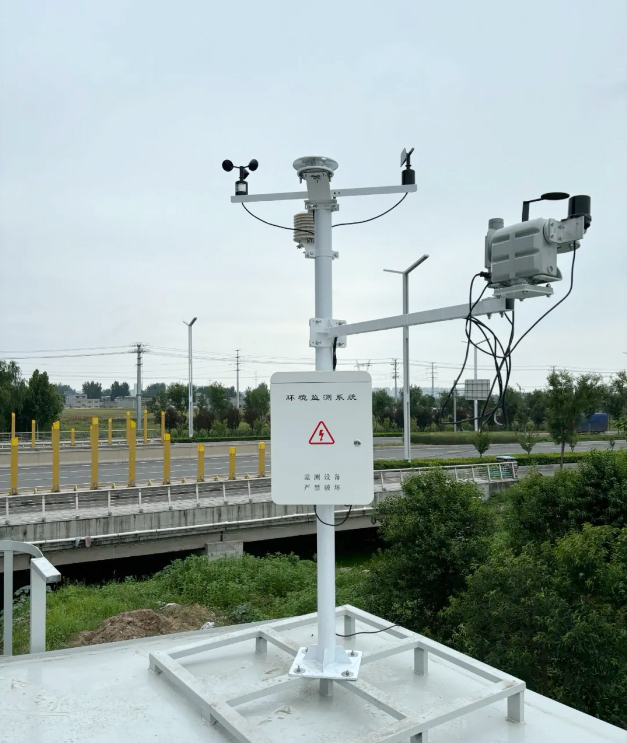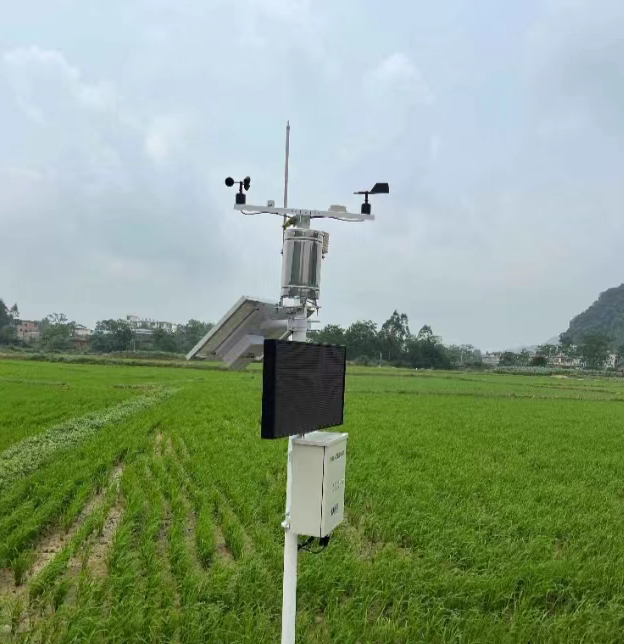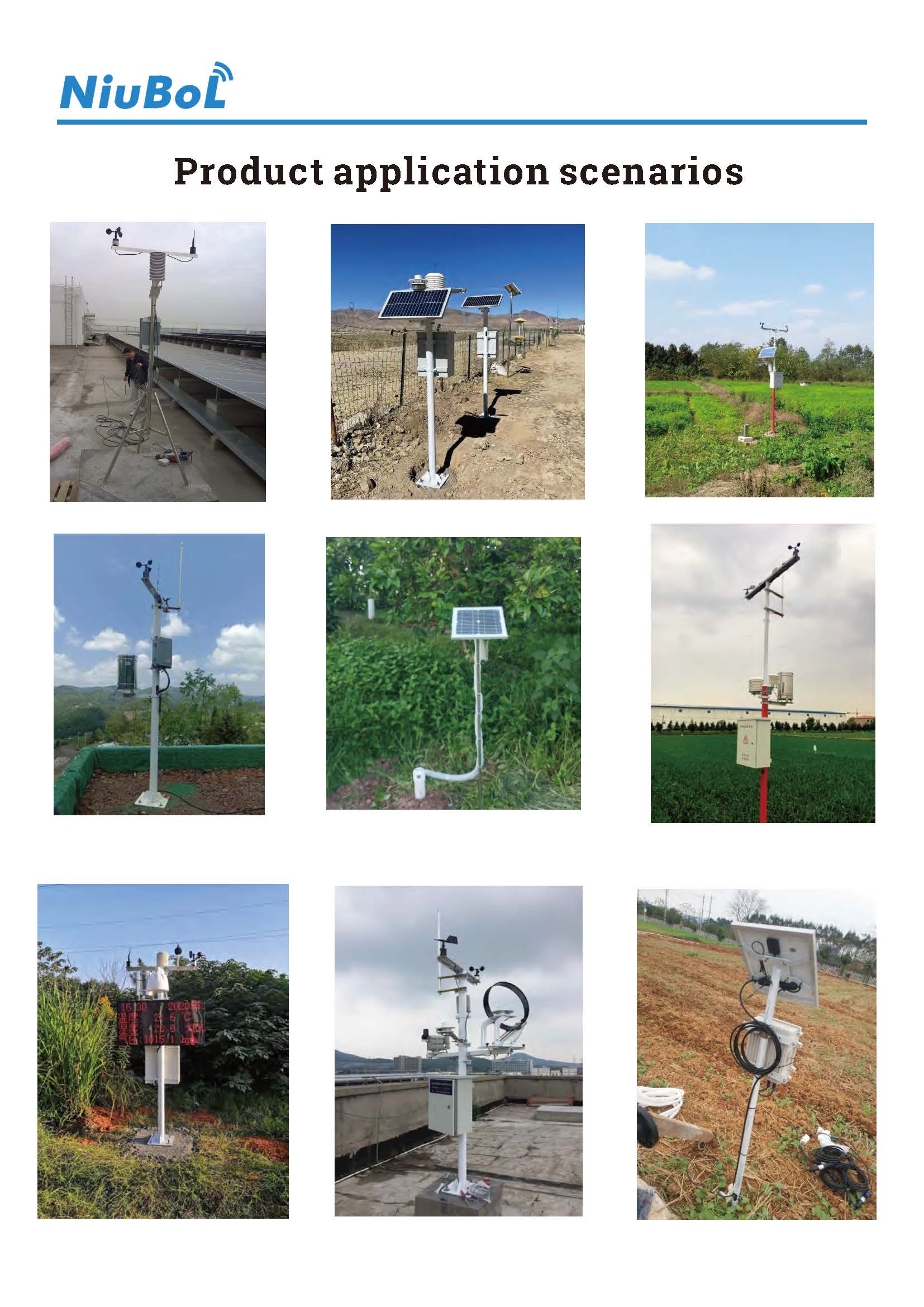

— Blogs —
—Products—
 Consumer hotline +8618073152920
Consumer hotline +8618073152920 WhatsApp:+8615367865107
Address:Room 102, District D, Houhu Industrial Park, Yuelu District, Changsha City, Hunan Province, China
Product knowledge
Time:2024-10-19 18:04:07 Popularity:2747
A weather station is a place or equipment set up to observe and record the atmospheric conditions in the near-surface layer. Its main task is to obtain real-time data on meteorological elements (e.g. temperature, humidity, barometric pressure, wind speed, wind direction, precipitation, etc.), which are important in many fields such as weather forecasting, climate analysis, environmental assessment, disaster prevention, and agricultural guidance.
Weather stations can be categorized into various types, including handheld weather stations, automatic weather stations, fixed weather stations, and so on. Different types of weather stations have different features and functions, but they usually contain key components such as sensors, data collectors, data transmission equipment and data processing systems.
Sensors: Used to measure various meteorological elements, such as temperature sensors to measure temperature, humidity sensors to measure humidity, wind speed and direction sensors to measure wind speed and direction, and rainfall sensors to test rainfall.
Data Collector: Responsible for collecting data measured by sensors and carrying out preliminary processing and storage.
Data transmission equipment: transmits the collected data to the data center or user side for further analysis and application.
Data Processing System: Processes and analyzes the collected data to generate weather reports or warning information.
Data from weather stations are crucial to the accuracy and timeliness of weather forecasts. By continuously monitoring and recording changes in meteorological elements, weather stations are able to provide real-time meteorological information to help people better understand the current weather conditions and make decisions accordingly.
In addition, weather stations can be used in climate research, environmental monitoring, disaster warning and other fields. Through long-term observation and recording of meteorological data, scientists can analyze the trend and pattern of climate change and provide scientific basis for environmental protection and sustainable development.
Mini/Micro Weather Station is a miniaturized and highly integrated meteorological observation equipment. It is equally capable of monitoring and recording a wide range of meteorological elements, such as temperature, humidity, barometric pressure, wind speed, wind direction and rainfall. However, compared with the traditional weather station, the miniature weather station has the following significant features:
1. compact size: micro weather stations are usually small in size and can be flexibly deployed in various environments.
2. Highly integrated: micro weather station will be a variety of sensors and data collectors and other components are highly integrated together, making the equipment more compact and efficient.
3. low power consumption: micro weather station usually adopts low power consumption design, can be powered by solar energy or battery, to ensure that the equipment can operate stably in a variety of environments.
4. Easy to install and maintain: the installation and maintenance of miniature weather station is relatively simple and does not require complex operation and professional technicians.
The miniature weather station can be widely used in various indoor and outdoor meteorological observation occasions, such as agriculture, forestry, urban planning, environmental protection and other fields. It can also be used as a teaching tool to help students understand the basic principles and observation methods of meteorology. In addition, the mini weather station can also be used for temporary observation or detailed meteorological investigation of a specific area, providing scientific basis for research and decision-making in related fields.

1. Temperature sensor: Used to measure air temperature. The function is to provide real-time temperature data, the value is to help users understand the current climate conditions.
2. Humidity Sensor: Used to measure air humidity. The function is to monitor humidity levels and the value lies in agricultural irrigation, comfort assessment, etc.
3. Wind Speed and Direction Sensor: Used to measure wind speed and direction. The function is to provide information about the wind, and the value lies in areas such as weather forecasting and wind power generation.
4. Barometric Sensor: Used to measure atmospheric pressure. The function is to track changes in barometric pressure, and the value lies in predicting weather changes, altitude monitoring.
5. Rainfall Sensor: Used to measure the amount of precipitation. The function is to record rainfall, and the value lies in hydrological monitoring and agricultural management.
6. Other sensors: such as light sensors, air quality sensors, etc.
Through these sensors, the mini weather station can obtain real-time meteorological data, providing important basic information for meteorological research, agricultural production, environmental monitoring, outdoor sports and so on.
The high precision, stability and fast response capability of the sensors ensure that the collected data are accurate and reliable, providing scientific basis for research and decision-making in related fields.
Transmit the collected data to the receiving end through Ethernet, RS232/RS485 and other data cables. Stable transmission, low data loss rate, but the wiring cost is high and limited by the length of the cable.
Bluetooth transmission: suitable for short-distance data transmission, generally about 10 meters. Commonly used to transmit data from small weather stations to nearby mobile devices for viewing and processing.
Wi-Fi transmission: data transmission is realized within the Wi-Fi coverage area, with faster transmission speed, suitable for use in places with stable Wi-Fi network.
GPRS/4G/5G transmission: Utilizing mobile network for data transmission, with wide coverage and not limited by distance, suitable for use in remote areas or environments without wired network and Wi-Fi coverage.

Outdoor adventure: provide real-time meteorological information for outdoor activities such as hiking and mountaineering to help users make more informed decisions.
Agricultural production: monitoring the meteorological conditions of farmland to develop more scientific irrigation, fertilization and pest control plans.
Environmental monitoring: Used to assess the quality of the environment and provide a scientific basis for environmental protection and sustainable development.
School education: as a teaching tool to help students understand the basic principles of meteorology and observation methods.
Sports events: Provide real-time weather information to help event organizers make more reasonable game plans and safety measures.
Home and garden: Monitor daily weather and optimize gardening activities.
Outdoor activities: Provide weather information for hiking, camping and other activities.

Summary:
Weather station is an important facility for observing and recording atmospheric conditions. Mini Weather Station is a small and multi-functional weather monitoring system. By integrating a variety of high-precision sensors (temperature sensors, humidity sensors, wind speed sensors, wind direction sensors, barometric pressure sensors and rainfall sensors, etc.), the mini weather station is able to acquire weather data in real time, and provide important basic information for a number of fields.
Mini weather station has various data transmission methods, including wired transmission and wireless transmission, which can be adapted to different application scenarios. Mini weather station has a wide range of application scenarios, including personal, outdoor adventure, agricultural production, environmental monitoring, school education and sports events. With the continuous development of technology, mini weather station will play an important role in more fields.
Related recommendations
Sensors & Weather Stations Catalog
Agriculture Sensors and Weather Stations Catalog-NiuBoL.pdf
Weather Stations Catalog-NiuBoL.pdf
Related products
 Combined air temperature and relative humidity sensor
Combined air temperature and relative humidity sensor Soil Moisture Temperature sensor for irrigation
Soil Moisture Temperature sensor for irrigation Soil pH sensor RS485 soil Testing instrument soil ph meter for agriculture
Soil pH sensor RS485 soil Testing instrument soil ph meter for agriculture Wind Speed sensor Output Modbus/RS485/Analog/0-5V/4-20mA
Wind Speed sensor Output Modbus/RS485/Analog/0-5V/4-20mA Tipping bucket rain gauge for weather monitoring auto rainfall sensor RS485/Outdoor/stainless steel
Tipping bucket rain gauge for weather monitoring auto rainfall sensor RS485/Outdoor/stainless steel Pyranometer Solar Radiation Sensor 4-20mA/RS485
Pyranometer Solar Radiation Sensor 4-20mA/RS485
Screenshot, WhatsApp to identify the QR code
WhatsApp number:+8615367865107
(Click on WhatsApp to copy and add friends)
